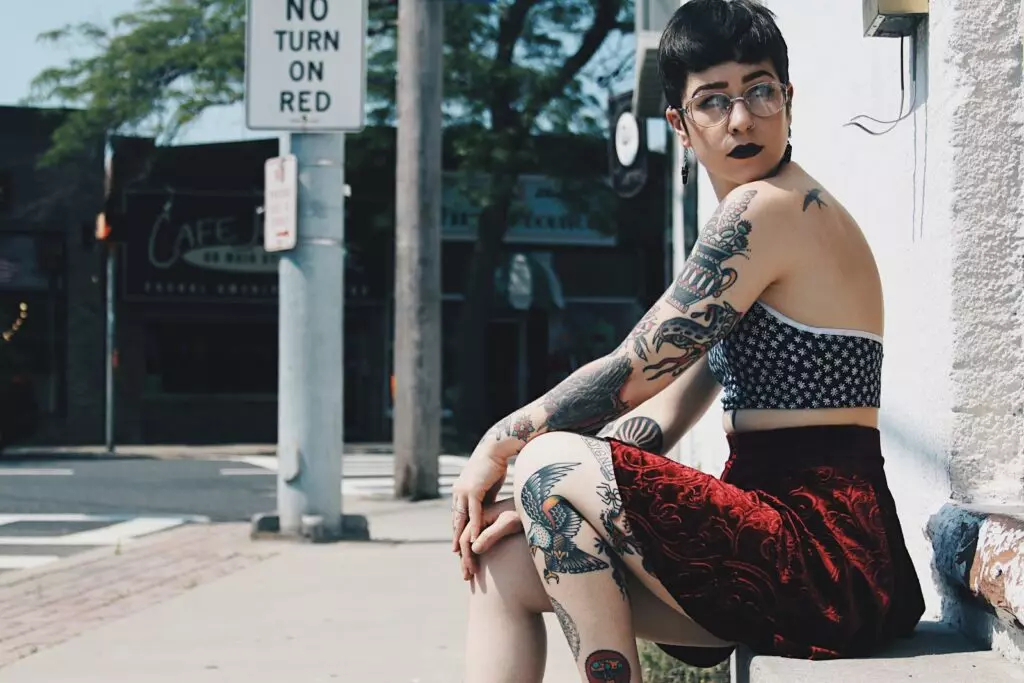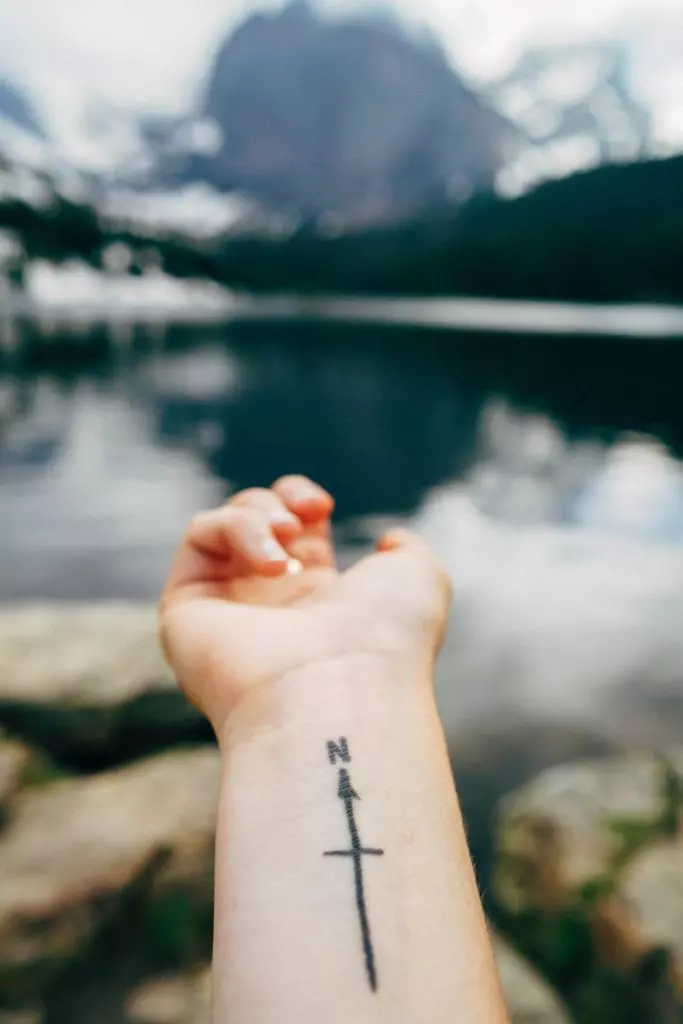We’ve written here before about the “sterility” and physical safety of do-it-yourself stick and poke tattoos. I wanted to tackle a different topic today… a topic I love… the topic of emotional safety.

Photo by Timothy Paul Smith on Unsplash
Of course, emotional safety is far more subjective and contextual than physical safety – you can tell whether you have an infection pretty easily, but it can be much more difficult, and far more personal, to gauge your level of emotional safety. It depends on a lot of factors – how you define emotional safety for yourself, to what degree you see your physical & mental safety as intertwined with your emotional safety, and how much risk you feel good to undergo for some result that will bring you emotional fulfillment in the future.
So what’s the deal with stick and poke tattoos and emotional safety? What are the risks and what are the advantages? How do we incorporate, deliberately or unknowingly, a need for emotional safety into our stick and poke tattooing process?
The way I see it, my entire being is intertwined – my physical and mental well being is intimately intertwined with my emotional safety. So, for me to feel emotionally safe to get a stick and poke tattoo, I need to trust the person tattooing me. I want to feel reassured that they’ve done this before, they know what they’re doing to a reasonable degree, they know how to keep their supplies clean, and they’re using high-quality ink and new needles every time.
There are definitely risks that come with any type of tattoo, including stick and poke tattoos. And this can make them feel dangerous. There’s not only the standard risks of infection, allergic reactions, and blood-borne diseases. There’s things like… sarcoidosis, which is little bumps on your skin that can more easily arise on tattoos than other parts of your skin. There’s a chance, especially with bigger tattoos, or sleeves, of missing the signs of skin cancer. I know for me, my skin and the way it looks and feels plays a role in my self-esteem and how I feel about myself. Having visible bumps or an allergic reaction on my skin would definitely affect my feeling of general emotional safety.
An obvious part of getting a tattoo is the pain…
… and pain is a tricky emotional experience. There’s a risk of the pain being too much, or not worth it. Also, pain releases endorphins into our bodies, and that “can become a deeply therapeutic process, for that very reason. ‘After you get a tattoo, pay attention to how you feel emotionally,’ Barretta says.
‘Tattoos can trigger buried feelings that rise to the surface for release. It either happens right away, or the effects of the shifting energy kick in weeks later.’”
Another article worth reading says that “medical researchers are finding that tattoos can give hope to people coping with mental illness, a physical condition or abnormality, as a way to remind them of their strength and self-worth.” In my experience, for myself and for others I know who love getting and having tattoos, both the art itself and the process of tattooing holds deep emotional significance

Photo by Natalie Rhea Riggs on Unsplash
Tattoos are a way for folks to reclaim parts of their bodies, or their experiences with their body, or their sense of self. This can be particularly important for queer & trans folks and womxn, who experience so much body-based oppression, trauma, dis-association, and dysphoria.
I think that using stick and poke tattoos as a way to bring yourself emotional fulfillment, joy, or ease can be empowering for yourself and a powerful external statement as well. Getting a stick and poke tattoo from a friend can be a bonding experience that reminds you of the support you have from that person being in your life. It can represent and remind you of an important learning moment in your life, a transformation you went through, or a difficult event that you survived.
Who is doing the tattooing?
One of the biggest factors that can go into me feeling emotionally safe getting a tattoo, and this may be obvious – is the artist! Who’s tattooing me? How do I feel about them? Although there are an increasing number of amazing queer folks and womxn working in tattoo shops, the professional tattoo world is still dominated by white cis men. If you’re looking for a queer and/or POC tattoo artist, it’s going to be much easier to work with someone if you take a non-professional route to get your tattoo. As a queer, non-binary persxn, I need the people who put permanent art onto my body to understand, at least to a certain degree, the way I move through the world, and how I relate to my body. I need to feel a mutual connection around queerness supporting my process of self-expression through tattoos.
The first tattoo I ever got was from a white cis man, and while I feel happy with the tattoo after all these years, the experience wasn’t great and I don’t look back on it with a feeling of emotional fulfillment, as I do with my other tattoos. He was watching not one but two tv’s while he tattooed me, and he rushed the process and made me feel like I was silly for being particular about what font I wanted the tattoo to be in. After I got my first stick and poke tattoo, in the living room of my own home, done by a dear friend, I realized the kind of emotional safety that comes with accessing relationships and self-expression outside the normal confines of the professional tattoo world. I’ve been hooked ever since!
Emotional safety is a dynamic and intricate concept, and it’s different for everyone. What makes you feel emotionally safe to get a stick and poke tattoo? How do you use stick and poke tattoos to access or increase your emotional well-being?
xoe
